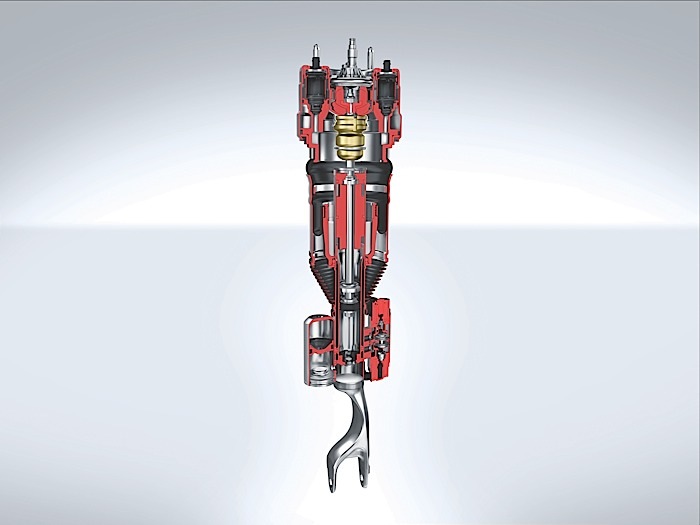 When Mercedes introduced a hydraulic suspension in 1999 called Active Body Control, it was only offered on cars, not SUVs. This is because it is difficult to displace enough fluid to control the movements of a suspension with longer travel and a higher center of gravity. Air was the only option.
When Mercedes introduced a hydraulic suspension in 1999 called Active Body Control, it was only offered on cars, not SUVs. This is because it is difficult to displace enough fluid to control the movements of a suspension with longer travel and a higher center of gravity. Air was the only option.
The 2016 Mercedes Benz GLC features an optional full-support, multi-chamber air suspension system and electronically controlled, continuously adjustable damping. The Air Body Control suspension combines excellent driving stability and sporty agility with optimum comfort and off-road capabilities. Specific characteristics are pre-selected according to the settings of the driving dynamics program selected by the driver and are controlled by sensors that measure suspension travel and vehicle dynamics.
In Sport mode, the occupants feel as if they are sitting in a sports car with a high level of lateral dynamics due to the tauter connection of the chassis, which is additionally lowered by 15 mm. Comfort mode offers the opposite ride experience, and is tuned to isolate the passengers. To ensure maximum driving safety in this mode, the spring and damper forces adapt within 60 milliseconds in response to sudden evasive maneuvers, for example.
When the GLC is equipped with the Off-Road Engineering package, Air Body Control optimizes the wheels’ surface contact, ensuring progress in off-road terrain, by raising the driving level by up to 50 mm and providing for particularly soft basic tuning. Additional benefits of the system include reduced rolling during cornering, automatic level control, and lowering of the load compartment sill for convenient loading and unloading.
The first thing you will notice is the size of the inlet and dump valves. These valves are what allow the suspension to react in 60 milliseconds. Also, the dual chambers in the air bags allow the pressure to be managed more effectively and reduce compressor run time.













